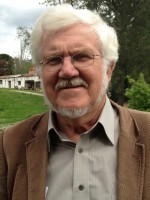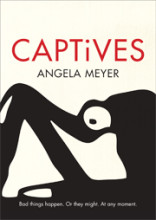Harriet McKnight interviews Laurel Fantauzzo
 Laurel Fantauzzo is a writer and teacher. Much of her work finds her studying appetite, identity, the signals for real love, and the search for home. She is largely a nonfiction writer and an essayist, but she also writes young adult fiction. Laurel Fantauzzo was born in Southern California to a Filipina mother and an Italian-American father.
Laurel Fantauzzo is a writer and teacher. Much of her work finds her studying appetite, identity, the signals for real love, and the search for home. She is largely a nonfiction writer and an essayist, but she also writes young adult fiction. Laurel Fantauzzo was born in Southern California to a Filipina mother and an Italian-American father.
Laurel Fantauzzo on identity, writing, and finding a way through.
Born in Southern California to a Filipina mother and an Italian-American father, Laurel Fantauzzo has called Brooklyn, Manila and Iowa City home. Currently, she lives in Singapore and teaches literature and creative writing at Yale-NUS.
Her work has appeared in The New York Times, The Manila Review, and Esquire Philippines to name a few. She earned a 2011 Fulbright research scholarship, a 2012 Iowa Arts Fellowship, and a 2013 Don Carlos Palanca Memorial Award for Literature. Her unpublished non-fiction manuscript, The First Impulse: Notes on Love, Film, and Death in the Philippines, is an investigation into the unsolved deaths of two young film critics, and she is currently at work on a memoir.
There is an undercurrent to Laurel’s work that is hard to define. An acknowledgement of the complexities of the emotional and social worlds she finds herself in, a consideration of the intrinsic nature of social and political discourse and the everyday, and an intelligence that would make approaching her in an interview context potentially intimidating. But in person, Laurel is a lot like her writing: generous, sharp, and affecting.
Harriet: Do you consider your work to be political?
Laurel: Yes!
Harriet: Can you define the political nature of your work? Would you consider it to be political in terms of critiquing the broad, social structures of society or in terms of it subscribing to the second-wave feminist concept of ‘the personal is political’?
Laurel: Again: yes. Ha!
But it’s true! When it comes to writing, I don’t necessarily believe in the application of “either/ or.” I avoid dichotomies, because if dichotomies were broadly applied, I, a hybrid person, would not exist! And (today, anyway), I rather like existing.
I do critique the broad social structures of society, and I do it through my documentation of small, personal gestures. Where do we feel oppression most intimately? I’d argue that we feel it the most in quiet interactions, where we assume ourselves to be safe, and / or innocent. A writer whose work I follow, Elaine Castillo, paraphrased Frantz Fanon when she told me we should examine our privileges with as much passion as we examine our oppressions. I’m interested in examining how we both suffer from, and perpetuate, damaging social structures in our day-to-day decisions. It’s a weighty examination, but I think it’s important to be conscious.
Harriet: You write often of being an outsider in your motherland, the Philippines, but particularly in the beautiful essay ‘Under My Invisible Umbrella’, you discuss the complexities of being white-skinned in a brown land. Would you consider the ability to espouse politics to be a position of privilege? And how do you negotiate that within your work?
Laurel: Yes, it is a position of privilege. I was born in Southern California and speak American English. Growing up with a frequently frustrated Filipina mother and a Filipina grandmother with limited English, I became somewhat fluent in code-switching, subtly changing my reactions and language around groups of Filipinos versus groups of white Americans. The language I know best, English, is the world’s favored linguistic currency of business and power. My pallid complexion is still associated with high beauty standards. I try to name the relevant, unearned advantages I hold as the writer and narrator. But I am sure I make errors, fail, and carry blind spots of my own.
A friend teased me for feeling annoyed at pale foreigners who come to the Philippines, often men who drone on and on to Filipinos with their so-called outsider expertise. “But you’re white!” she said, and laughed. Yes, in the Philippines, I am considered white; in the US, my race is a question mark, and in Romania I was asked if I was from China or Japan. I said to my friend, “Don’t worry. I have plenty of contempt for myself as well.” It’s a difficult balance, in nonfiction: making confident assertions while carrying a modicum of humility and a sense of humor. I try.
Harriet: As is the case in your essay ‘The Animals in My Home’, there is a real weaving of your life in the Philippines with your past in the United States, including your use of Tagalog words mixed in with the English. Is this “code-switching” between cultures something that you find challenging to translate into your non-fiction? At a craft level, was it ever something that you had to reconcile? Or in your opinion, is the written word a space you feel most allows for a fluidity of identity?
Laurel: No, it’s not challenging. It’s just my life.
I never had to reconcile any of my cultural subjects on a craft level. I mostly had to reconcile with myself on a psychological level before I was able to write the stories I have inside me. I felt apologetic and sheepish about identifying as Filipina and claiming the Philippines as a home. Now I am more inclined to embrace my sense of unbelonging. I’ve let go of the idea that any one country or any one label will ever offer me a complete sense of home, much less a complete sense of self. The hyphen is where I live.
Harriet: That is a really beautiful answer. I’d be interested to know however how much you feel that you draw from your environment. Outside the usual progression with your craft, do you think your writing has changed since your move to the Philippines?
Laurel: Yes. In the US I was laboring under the unspoken assumption that my ultimate audience would be white Americans who have very little patience for hybrid people and stories from abroad. Whether or not it was ultimately true, or just my own fears, I think this assumption weighed on me, making me feel a bit hopeless and constrained about the worth of my work. In the Philippines I was somehow able to realign my conscious and unconscious priorities and free my voice. In both graduate school and from Manila, I was also fortunate to work with supportive teachers and editors.
Speaking of privilege, the cost of living in the Philippines, while unjustly burdensome to the vast majority Filipino citizens, is also unjustly easier for persons from abroad. So whereas in the US, I would have had to have several roommates and jobs to support myself as a teacher and a writer, I was able to have my own apartment in Metro Manila and even a cat. The space of my own was, and remains, important.
Harriet: Which is sort of a tricky emotional space to inhabit at times I’d imagine. Do you feel a sense of conflict between your privileged “white” background and your less privileged “non-white” backgrounds? As a writer who is conscious of exposing social oppression and differences, do you feel it difficult to reconcile your own lifestyle in comparison to those around you, and does this complicate your writing process?
Laurel: This line of questioning gives me a tension headache!
Harriet: Oh no! Sorry about that! The summary of your thesis/ first non-fiction, full-length manuscript The First Impulse: Notes on Love, Film, and Death in the Philippines describes it as your “attempt at literature as a form of justice”. How far do you see literature can go towards obtaining justice and “writing” wrongs?
Laurel: I think literature can be both a first and last resort. In a society where justice and the truth are elusive, accurate storytelling can be nothing less than an act of revolution. But the kind of revolution that leads to repair, not more violence. That is my hope at least.
Harriet: That’s my hope also. It would be lovely to finish on a lighter note. Can you talk a little about what is exciting you at the moment?
Laurel: You can leave in my response about the tension headache! But I’ll return to your earlier question now.
In a world that requires binaries and absolutes, those of us with mixed identities are often looked at with assumptions that do not have room for our realities. As the scholar Alex Orquiza says, it is very dangerous and usually a mistake to use absolute terms when discussing identity. I suppose that’s what makes me wince; the premise of your question. I feel it assumes that as a mixed race, mixed culture person, I transform in manipulative ways. That I am inevitably the perpetual traitor and outsider in whatever space I occupy. There is a trope in popular 20th century fiction that mixed race people are inevitably tragic, not able to fit anywhere. I don’t think I’m particularly tragic. Most days I simply am. Or try to be.
I suppose you’re right, though. Clearly I do feel a sense of conflict! But unresolvable conflicts can be healthy for essayists, even if they cause pain and frustration.
As for what’s exciting me at the moment: fresh squash blossoms, sold curbside, roasted with cheese in my little toaster oven. My cat, asleep with her face in the palm of my hand. The Legend of Korra, with its sense of humor, strong female physicality, scenes of terror and post-traumatic stress disorder, and its development of a sweet, genuine lesbian love story at its apex.
That about covers it!
You can read Laurel’s wonderful essay, ‘How To Survive A Super Typhoon’ here.
 Harriet McKnight currently lives in Melbourne. In 2014, she was shortlisted for the Overland Victoria University Short Story Prize. In 2015, she was shortlisted for the ABR Elizabeth Jolley Short Story Prize. Her work has been published in The Lifted Brow and The Suburban Review digital editions and she has worked since 2013 as the deputy editor of The Canary Press.
Harriet McKnight currently lives in Melbourne. In 2014, she was shortlisted for the Overland Victoria University Short Story Prize. In 2015, she was shortlisted for the ABR Elizabeth Jolley Short Story Prize. Her work has been published in The Lifted Brow and The Suburban Review digital editions and she has worked since 2013 as the deputy editor of The Canary Press.








